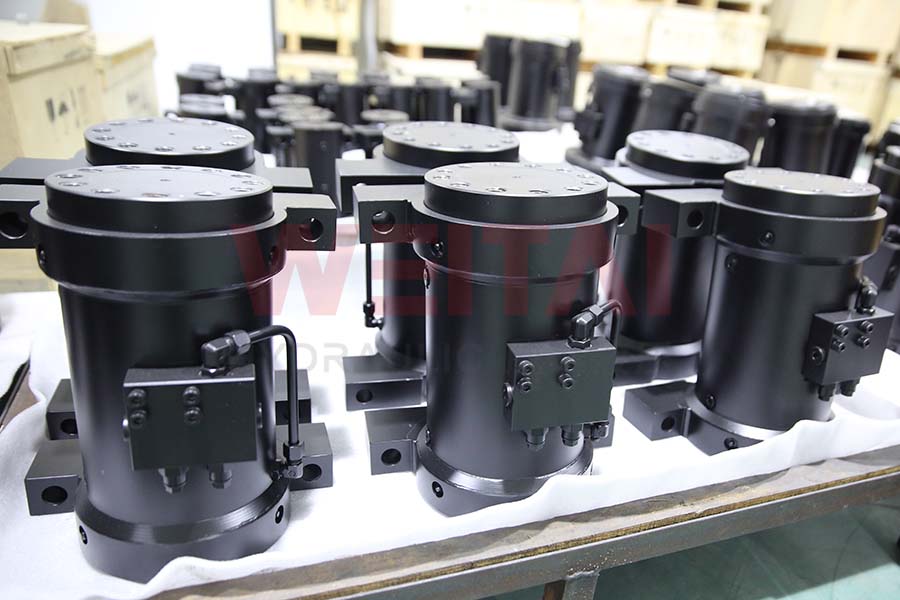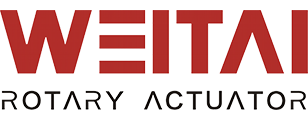A hydraulic rotary actuator can be applied to various machines, such as industrial robots (Used to control the movement and positioning of robotic arms, enabling precise rotations), construction machinery (Such as cranes and excavators, for controlling the movement of booms and buckets), agricultural machinery (In equipment like harvesters and tractors, it can be used for adjusting working angles and positions), and marine machinery (Applied in ship steering systems and other marine equipment that requires rotational movement). However, do you know how to choose an appropriate hydraulic rotary actuator for a specific machine? In the following content, WEITAI will give you some tips.

When choosing an appropriate hydraulic rotary actuator for a specific machine, you can consider the following factors in detail:
1. Load Requirements
Thoroughly determine the maximum load that the actuator will need to handle. This encompasses not only static loads but also dynamic loads that occur during operation. Static loads are the constant forces acting on the actuator, while dynamic loads can result from vibrations, accelerations, and sudden impacts. By accurately assessing these loads, you can choose an actuator with a sufficient rated torque to handle the expected loads without overloading or premature failure.
Additionally, consider the type of load that the actuator will encounter. Loads can be axial, radial, or a combination of both. Axial loads act along the axis of rotation, while radial loads act perpendicular to the axis. Some actuators are specifically designed to handle certain load types more effectively. For example, an actuator with a larger bearing capacity may be better suited for radial loads, while one with a stronger shaft may be more appropriate for axial loads.
2. Rotational Speed and Accuracy
Carefully consider the required rotational speed of the machine. Different actuators have different speed capabilities, ranging from slow and precise movements to high-speed rotations. Ensure that the chosen actuator can meet the speed requirements without sacrificing performance or durability. If the machine requires rapid rotations, look for an actuator with a high maximum speed rating. On the other hand, if precision is more important than speed, a slower actuator with finer control may be the better choice.
Accuracy is also a crucial factor, especially in applications that require precise positioning. Look for actuators with precise control and minimal backlash. Backlash refers to the amount of play or looseness between the input and output shafts of the actuator. Minimizing backlash ensures accurate positioning and repeatability. Some actuators may offer features such as zero backlash gears or feedback sensors to improve accuracy.
3. Environmental Conditions
Thoroughly assess the operating environment of the machine. If it will be exposed to extreme temperatures, moisture, dust, or corrosive substances, choose an actuator that is designed to withstand these conditions. For example, actuators with special seals and coatings can protect against moisture and corrosion. In extreme temperature environments, actuators with temperature-resistant materials and lubricants may be required.
Consider the available space for installing the actuator. Some actuators are more compact and may be better suited for machines with limited space. Additionally, take into account any clearance requirements or restrictions around the actuator to ensure proper installation and operation.
4. Compatibility with Hydraulic System
Ensure that the actuator is compatible with the existing hydraulic system of the machine. Check the pressure and flow requirements of the actuator and make sure they match the capabilities of the hydraulic pump and other components. If the actuator requires a higher pressure or flow than the system can provide, it may not operate properly or could cause damage to the hydraulic system.
Consider the connection types and sizes to ensure easy integration into the hydraulic system. Compatibility with existing hoses, fittings, and valves can simplify installation and reduce the risk of leaks or other issues.
5. Brand and Reliability
Conduct extensive research on different brands and manufacturers to find a reliable and reputable supplier. Read reviews and ask for recommendations from other users or industry experts. A reliable brand will often have a proven track record of quality and performance, reducing the risk of breakdowns and downtime.
Look for actuators with a proven track record of performance and durability. This can be determined by checking the manufacturer’s specifications, warranties, and customer testimonials. An actuator that has been tested and proven in similar applications is more likely to perform well and last longer.
Consider the availability of spare parts and technical support. In case of a breakdown or maintenance issue, having access to spare parts and knowledgeable technical support can minimize downtime and ensure quick repairs.
6. Cost
Consider the cost of the actuator in relation to its performance and features. While it may be tempting to choose the cheapest option, it’s important to balance cost with quality and reliability. A low-cost actuator may not offer the same level of performance or durability as a more expensive one, leading to increased maintenance costs and downtime in the long run.
Consider the total cost of ownership, including maintenance and replacement costs over the life of the machine. Some actuators may have a higher initial cost but may require less maintenance and have a longer lifespan, resulting in lower overall costs. Additionally, factor in any energy consumption or efficiency differences between actuators, as this can also affect operating costs.
7. Safety
If you are going to purchase a hydraulic rotary actuator for your aerial working platform, the safety performance should be at the highest priority. On this condition, we recommend the actuators with a counterbalance valve. It prevents uncontrolled motion of the actuator, maintains load stability, and manages pressure within the system. Equipped with this type of rotary actuator, the platform will hold in position in case the power system breaks down to keep the worker to be safe.
In Conclusion
How to choose an appropriate hydraulic rotary actuator for a specific machine is a complex thing. We need to take the performance, environment impact, compatibility, brand, cost, and the most important thing – safety into consideration. If you are confused with these factors, contact WEITAI Hydraulic and we will help you.
